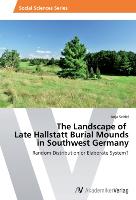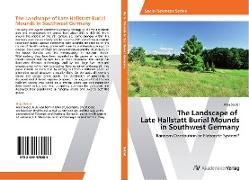The Landscape of Late Hallstatt Burial Mounds in Southwest Germany
BücherAngebote / Angebote:
The early Iron Age in southwest Germany belongs to the west Hallstatt area and encompasses the period from about 800 to 450 BC. From around the middle of the 7th century BC, some changes within the mortuary practice are clearly visible: barrows with sometimes numerous secondary burials appear, sometimes with splendid inventories. In the course of the 6th century, graves with even more elaborate grave goods emerge. Since most of them are concentrated around the Heuneburg on the upper Danube and the Hohenasperg in northern Baden-Württemberg, they have been regarded as the graves of nobles (so-called Fürsten) and the two hills as their residences. This image has dominated German archaeology, and by and large has remained unquestioned while new approaches have remained undiscussed. This paper intends to show that by setting out from a different point, an alternative social structure is equally likely. On the basis of inventory values and certain grave goods, the distribution of prosperity is discussed and different regions compared. It is suggested that the late Hallstatt society was based on a system where age and reputation determined status, and that prospering communities competed and displayed their significance in funerary rituals and lavishly outfitted graves.
Folgt in ca. 10 Arbeitstagen

